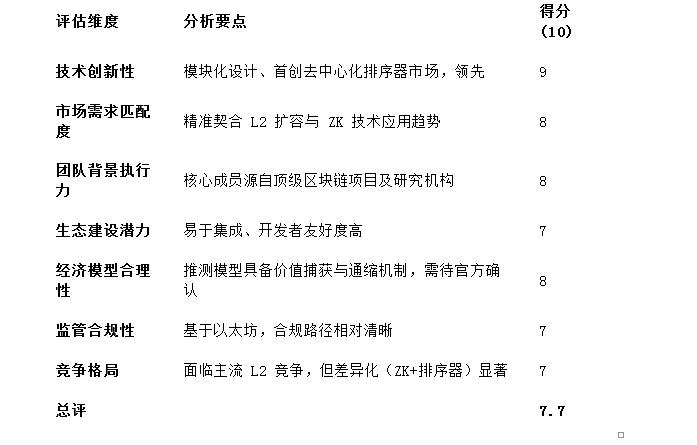1. Economic model and token value capture (speculative)
(Note: The project has not officially released tokens; the following is a reasonable speculation based on industry practices)
Token design (assumed $SLY):
Total supply: 1 billion
Distribution structure: Team 20% (4-year linear unlocking) / Investors 20% / Ecosystem fund 30% / Community 30%
Core uses: Staking to run orderer nodes, governance voting, paying network fees, ecosystem incentives (liquidity/users/developers)
Value capture mechanism:
Orderer node staking rewards: Nodes staking SLY participate in ordering and share transaction fees.
Gas fee deflation mechanism: A portion of gas fees is used for token buyback and destruction.
Governance: Token holders vote to decide protocol parameters and upgrades.
Ecosystem growth engine: Ecosystem fund used for airdrops and rewards, driving network effects.
2. Financing and ecosystem cooperation
Financing situation (as of 2025.8):
Seed round: ~20 million USD, lead investors: a16z, Polychain Capital, Dragonfly Capital, Coinbase Ventures.
Strategic investors: Leading exchanges, ZK technology companies, DeFi protocols.
Key partners:
Technical guidance/support: Ethereum Foundation.
ZK Rollup ecosystem collaboration: Polygon, zkSync, StarkWare (potential technical collaboration).
Data service integration: Chainlink (oracles), The Graph (indexing).
Enhanced security: EigenLayer (shared security, increasing trust in decentralized orderers).
3. Comprehensive investment potential assessment
Chart
4. Conclusions and recommendations
🔍 Core insights:
Solayer is a high-barrier, high-potential early Ethereum L2 project, particularly suitable for investors focusing on modular blockchain, ZK-Rollup, and decentralized ordering innovations for forward-looking investments.
✅ Core advantages:
Addressing core pain points: Efficiently solving Ethereum's scalability bottleneck, in line with industry trends.
Technologically advanced combination: ZK-Rollup ensures security and efficiency + innovative decentralized orderer network.
Top-tier capital endorsement: Supported by top venture capital such as a16z, enhancing market attention and subsequent liquidity expectations.
Developer-friendly: Designed for easy integration, conducive to attracting quality ecosystem applications (DApps).
⚠️ Key risks:
Project in early stage: Mainnet and tokens have not been released, with development and implementation uncertainties.
Intense market competition: Continuous challenges from established L2 solutions like Optimism, Arbitrum, zkSync, Starknet.
ZK technology evolution: ZK technology is still rapidly evolving and may face performance optimization or compatibility upgrade pressures.
Token model unclear: Design risks exist before final token economics (distribution, inflation, unlocking) are announced.
